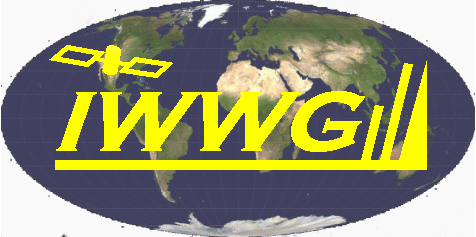Improved Monitoring of the Rapidly-Evolving Upper-Tropospheric Wind Fields over the Core of Hurricanes from High Spatiotemporal Resolution Geostationary Satellite Observations
This project utilizes the rapid-scanning capabilities of the new generation of geostationary satellite imagers for the derivation of high spatiotemporal AMVs during targeted hurricane events. We expect this effort will fill an important observational gap in hurricane analyses, as storm-scale dynamical information at the top of hurricane core and outflow regions is currently lacking and needed to intrinsically tie in convective processes with environmental interactions that can modulate intensity. The added data will not only improve our observation and understanding of hurricane behavior (e.g. intensity and size fluctuations), but provide key vortex-scale information to rapidly-advancing data assimilation methodologies leading to improved hurricane model predictions. Specifically, what we are working on/towards: 1) Complete the refinement and testing of recently-developed processing strategies (presented at IWW14) that have been optimized to extract maximum AMV information content in hurricane environments from GOES-16 meso-sector scans; 2) Tailor and test these strategies to operate with GOES-17 and Himawari-8/9; 3) With NWP collaborators, continue to investigate approaches to more effectively assimilate the enhanced AMV data into operational hurricane prediction models (i.e. Hurricane WRF (HWRF)) to maximize the information content getting into the initialized analyses and leading to improved forecasts; 4) Assist in the transition of this research to NESDIS and NCEP for operational testing and implementation in collaboration with STAR, JCSDA and EMC colleagues.
These objectives are being accomplished by advancing the current NESDIS operational (enterprise) AMV algorithms and building on novel data processing approaches developed at CIMSS to enhance those strategies, by demonstrating the end-to-end capabilities via real-time testing, and by transitioning the methodologies to STAR (collaborative partner) for seasonal real-time operational testing (JCSDA). In tandem, the data treatment and assimilation strategies will be honed for maximum HWRF model analysis impact through close collaboration between the data providers and users (NOAA/HRD and NCEP/EMC). While a primary objective will be the application of the enhanced AMVs to support NWP models, NWS/National Hurricane Center forecasters should also benefit from the enhanced AMV datasets (viewed on AWIPS) in their analyses of rapidly-evolving storm conditions. This poster reports on the status and progress of the project.






